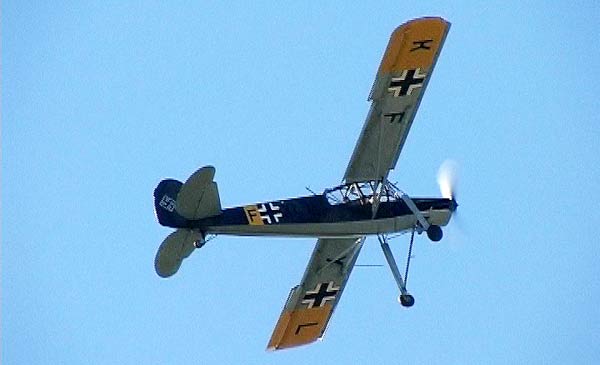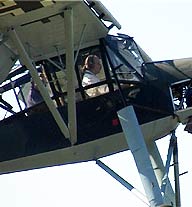|
|
|
General History
The Storch or Stork was designed by Fiesler in 1935 as a slow flying
liaison aircraft. With its' high-lift wings and fixed slots it could
take-off and land in very short distances. With a stall speed under 25
mph it proved its worth throughout World War II. Used on all fronts, it
had a tendency to overheating and the side cowls were generally left off
in hot climates. Many famous events included this aircraft during World
War II. Field Marshall Erwin Rommel, “The Desert Fox”, flew in one
throughout the North African campaign landing in troubled spots everywhere
along the front lines. It was this type that the Italian dictator
Mussolini was rescued from a hotel atop a mountain peak and it was a
Storch that transported the bomb that was used in an attempt on Hitler’s
life in July of 1944. Less than a year later, famous German woman
test-pilot, Hanna Reich, flew into the heart of besieged Berlin and landed
near the Brandenburg Gate in an attempt to rescue Hitler from the
surrounding Russians. During the occupation of France, the Germans set up
a Storch factory and forced the French to build them. After the war, the
French found themselves with tooling and parts. It was such a good
airplane that the French continued to build them.
|

